Leadership Selection
Selecting the right leaders for the mission
The need for high-caliber leadership is urgent. How can we make sure we select the right people for vital leadership roles? The Leadership Selection Process is an open and fair process used by organizations to ensure that all suitable candidates for key leadership positions are considered, screened, and selected in a way that is honoring and effective. This model assumes internal candidates are the predominant focus but can be adapted to include external applicants as well.
This is inherently a spiritual exercise for both the organization and the potential candidates who are seeking God’s direction and provision of the right person for the leadership role.

Step 1

Step 2

Step 3
Listing Candidates
During the Listing Candidates step, we generate a shortlist of potential candidates who may be qualified for the vacant leadership role. To do this, we first determine the qualifications, skills, and experience required for the role. This will come initially from the existing Job Description but can be revised. To do this, we have included an Leadership Needs Worksheet that will help you look at the competencies required of the new leader to fulfill the role effectively.
You will want to invite appropriate people to suggest nominations for the role. Determining who should be involved in this process is often complicated, but wherever possible, a broad and diverse group should be asked. The appropriate senior leadership team and the team that the new leader will oversee should be consulted. Other peers of the new leader and internal partners may also add great wisdom. We have included a Nominations Request Sheet that you may send to the stakeholders involved in creating this pool of potential leaders. It is helpful to give a deadline for the return of the nominations.
As a leadership team, you may have already used a tool such as the Leader Profile page as part of a Leadership Pipeline Process. This source of background information will also be extremely helpful in determining the pool of candidates.
When the list of potential leaders has been compiled, you will hopefully have a large pool of leaders to consider. At this stage, you will want to consult with other relevant leaders to carefully and prayerfully narrow the list down to three to five candidates that most closely match the criteria and competencies you identified.
When the relevant leaders have agreed, the candidates should be approached and asked to enter the selection process.
Gathering Information
The Gathering Information step ensures a complete and accurate picture of each of the possible candidates by collecting references for each. There may be others that are pertinent, but we recommend you take up references from:
- the current team leader
- one or two teammates
- one or two direct reports
In a Christian organization where the well-being of the family is a key factor, a more informal reference or discussion with the candidate’s spouse may also be helpful. We have included sample reference questions you can use.
The references should be collected, evaluated and summarized before any interviews take place. We have included sample interview questions for you to use. Interviews are always best carried out face to face, but where this is not possible, video conferencing is more effective than just audio.
There are personality, psychometric, and other assessment tools that can help add knowledge of the candidates to this process, however only use assessments that have been validated for the purpose of assessing people for new roles.
Once all the references, interviews, assessment information, and any other biographical detail have been gathered for each of the candidates, the appropriate leadership/selection team will prayerfully determine which candidate(s) appears to be most qualified or appropriate for the role.
For most organizations, this information and recommendation are submitted to a senior leadership team who will make the final decision. A Candidate Summary Sheet has been provided for this purpose.
Selecting the Leader
It is not uncommon to find that as you get to the step of Selecting a Leader, you actually need more information. Sometimes this is missing biographical information, but often it involves details that require a follow-up interview with one or more candidates. We have included some common follow-up questions in the sample interview questions resource. It is helpful to budget extra time for the process to ensure you don’t rush a decision because of time pressures.
The information on each candidate is included in the Candidate Summary Sheet from the previous step. To ensure the best fit, you may want to revisit the Leader Profile, the job description, and the skills/mindsets listed on the Leadership Needs Worksheet (all used in the Listing Candidates step). When you are satisfied that all the relevant information has been gathered, then prayerfully work through the summary report again and determine the most suitable candidate, considering competency, “fit” in the team, availability, as well as your own spiritual discernment.
When all are comfortable with the decision, the successful candidate should be invited to take up the role. Depending on the unexpectedness of the appointment and the amount of change involved, the candidate can be given an appropriate period of time for reflection and prayer before being required to give a response.
Once the candidate has accepted the position, work begins on the Leader Transition Process! This includes a timeline for transition, any developmental needs, how the decision will be announced – sequencing the order in which key stakeholders should find out.
For good people-management and in case questions are asked later, remember to archive all materials related to the process to preserve a record of the process.
From the links below, you can download the key tools for the Leadership Selection Process. For further help in making the most of these tools, have a look at the explanations and other resources in the resources for facilitators.
The resources were designed for implementation within the global ministries of Campus Crusade for Christ, so feel free to adapt the materials to fit your situation if needed.
Leadership Selection Process Overview
Key Tools:
Resources for Facilitators
Facilitators User Guide – a complete overview of the selection and transition processes
Leadership Selection Process Flowchart – for those who want it visually!
Using Job Descriptions – a helpful article from “Your First 100 days in LDHR”.
Listing Candidates
During the Listing Candidates step, we generate a shortlist of potential candidates who may be qualified for the vacant leadership role. To do this, we first determine the qualifications, skills, and experience required for the role. This will come initially from the existing Job Description but can be revised. To do this, we have included a Leadership Needs Worksheet that will help you look at the competencies required of the new leader to fulfill the role effectively.
You will want to invite appropriate people to suggest nominations for the role. Determining who should be involved in this process is often complicated, but wherever possible, a broad and diverse group should be asked. The appropriate senior leadership team and the team that the new leader will oversee should be consulted. Other peers of the new leader and internal partners may also add great wisdom. We have included a Nominations Request Sheet that you may send to the stakeholders involved in creating this pool of potential leaders. It is helpful to give a deadline for the return of the nominations.
As a leadership team, you may have already used a tool such as the Leader Profile page as part of a Leadership Pipeline Process. This source of background information will also be extremely helpful in determining the pool of candidates.
When the list of potential leaders has been compiled, you will hopefully have a large pool of leaders to consider. At this stage, you will want to consult with other relevant leaders to carefully and prayerfully narrow the list down to three to five candidates that most closely match the criteria and competencies you identified.
When the relevant leaders have agreed, the candidates should be approached and asked to enter the selection process.
Gathering Information
The Gathering Information step ensures a complete and accurate picture of each of the possible candidates by collecting references for each. There may be others that are pertinent, but we recommend you take up references from:
- the current team leader
- one or two teammates
- one or two direct reports
In a Christian organization where the well-being of the family is a key factor, a more informal reference or discussion with the candidate’s spouse may also be helpful. We have included sample reference questions you can use.
The references should be collected, evaluated and summarized before any interviews take place. We have included sample interview questions for you to use. Interviews are always best carried out face to face, but where this is not possible, video conferencing is more effective than just audio.
There are personality, psychometric, and other assessment tools that can help add knowledge of the candidates to this process, however only use assessments that have been validated for the purpose of assessing people for new roles.
Once all the references, interviews, assessment information, and any other biographical detail have been gathered for each of the candidates, the appropriate leadership/selection team will prayerfully determine which candidate(s) appears to be most qualified or appropriate for the role.
For most organizations, this information and recommendation are submitted to a senior leadership team who will make the final decision. A Candidate Summary Sheet has been provided for this purpose.
Selecting the Leader
It is not uncommon to find that as you get to the step of Selecting a Leader, you actually need more information. Sometimes this is missing biographical information, but often it involves details that require a follow-up interview with one or more candidates. We have included some common follow-up questions in the sample interview questions resource. It is helpful to budget extra time for the process to ensure you don’t rush a decision because of time pressures.
The information on each candidate is included in the Candidate Summary Sheet from the previous step. To ensure the best fit, you may want to revisit the Leader Profile, the job description, and the skills/mindsets listed on the Leadership Needs Worksheet (all used in the Listing Candidates step). When you are satisfied that all the relevant information has been gathered, then prayerfully work through the summary report again and determine the most suitable candidate, considering competency, “fit” in the team, availability, as well as your own spiritual discernment.
When all are comfortable with the decision, the successful candidate should be invited to take up the role. Depending on the unexpectedness of the appointment and the amount of change involved, the candidate can be given an appropriate period of time for reflection and prayer before being required to give a response.
Once the candidate has accepted the position, work begins on the Leader Transition Process! This includes a timeline for transition, any developmental needs, how the decision will be announced – sequencing the order in which key stakeholders should find out.
For good people-management and in case questions are asked later, remember to archive all materials related to the process to preserve a record of the process.
From the links below, you can download the key tools for the Leadership Selection Process. For further help in making the most of these tools, have a look at the explanations and other resources in the resources for facilitators.
The resources were designed for implementation within the global ministries of Campus Crusade for Christ, so feel free to adapt the materials to fit your situation if needed.
Leadership Selection Process Overview
Key Tools:
Resources for Facilitators
Facilitators User Guide – a complete overview of the selection and transition processes
Leadership Selection Process Flowchart – for those who want it visually!
Using Job Descriptions – a helpful article from “Your First 100 days in LDHR”.
Related Resources
Not sure where to go from here? Take a look at some of the other Processes resources that are available to you.

Leader Transition Process
Leader Transitions Ensuring newly appointed leaders transition well Research shows that leader transitions are highly stressful. Approximately half of transitioning leaders under-perform and fall short

Conflict, Grievance & Discipline
Conflict, Grievance and Discipline As part of our “Your First 100 days in LDHR” course, this learning module leads you through the general principles of
Featured Tools
Introducing you to foundational tools of LDHR
Staff Standards
This "Your First 100 Days in LDHR" session articulates what it takes to be a staff member with CCCI
Mindset and Skill Shifts for New Levels of Leadership
A tool to help develop new local and national level leaders for Beyond 2020
The Purpose and Practice of Policy
This "Your First 100 Days in LDHR" session explains the reasons we have policies and how to write them well

